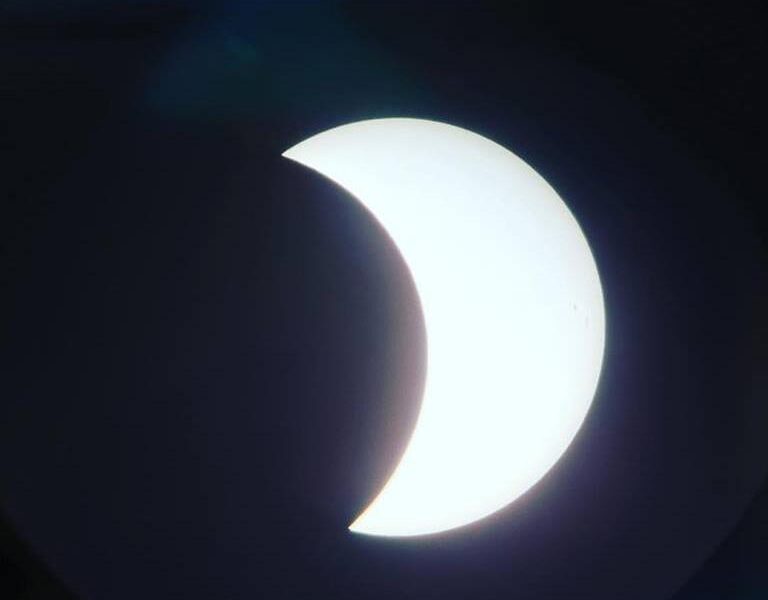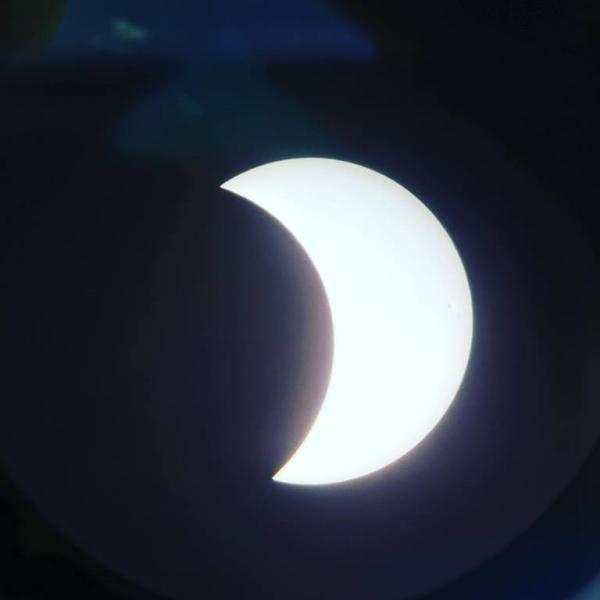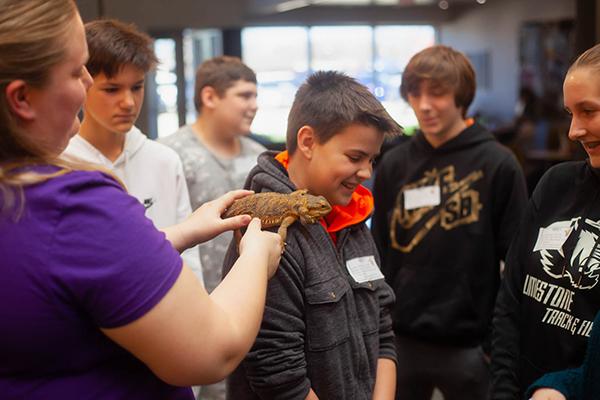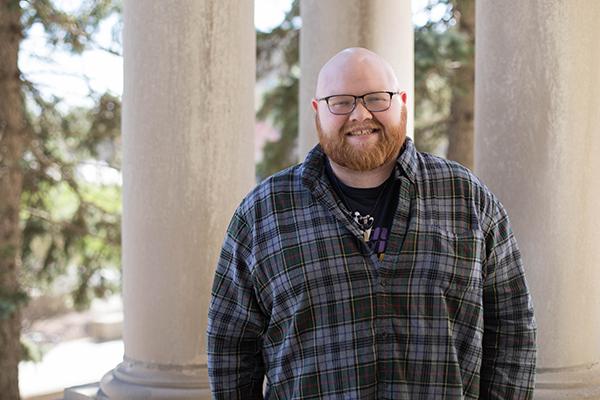
Viewing the total solar eclipse is a strong draw for any astronomer. Dr. Steve Case, professor in Olivet Nazarene University’s Department of Chemistry and Geosciences and director of Strickler Planetarium, is no exception. Dr. Case organized and led a day trip to view the 2017 eclipse at a site in the path of totality, where the sun was totally blocked for 2.5 minutes, beginning at 1:20 p.m. CDT.

“The eclipse was spectacular!” Dr. Case says. “The weather was perfect for viewing where we were in Murphysboro, Illinois. We had about 80 people there.”
“There was a lot of excitement among the group,” he adds. “As it got darker and darker, we heard cicadas. Bats were flying around, and the streetlights came on. Around the horizon, we could see a sunset glow. We also saw the corona and a couple of the bright planets.”
Joining Dr. Case for the trip were Dr. and Mrs. John Bowling, Olivet’s president and first lady, as well as a cadre of journalists and astronomy aficionados. Hosting Olivet’s group for the viewing in Murphysboro at the Church of the Nazarene were Rev. James Frye ’80 and his wife, Cindy (Frank) Frye ’77.
Rachel LeBeau, a senior art major and photographer, of Mankato, Minnesota, was among the group. “We were collecting a lot of scientific data, including the temperature and luminosity changes,” she says. “People were crowded around the telescope and staring in amazement through their glasses at the sun.”
“The experience was not just limited to the sight of the eclipse,” she adds. “It was an all-encompassing event. We felt the weather begin to cool and saw the light dim all around us. The moment the moon eclipsed the sun, people cheered and laughed at this beautiful ring of light. Stars and planets were visible. It was a truly bizarre and beautiful experience. As a photographer, I observed the joy, wonder and astonishment on every person’s face.”
The Olivet-sponsored group had one of the best possible views of this rare celestial event. A total solar eclipse across the entire United States, coast to coast, last occurred in 1918. In the 2017 eclipse path from Lincoln City, Oregon, to Charleston, South Carolina, one of the prime viewing points was Murphysboro and southern Illinois.
Total solar eclipses are only possible on Earth because of a rare cosmic occurrence. The sun’s diameter is about 400 times wider than the moon’s, but it is also about 400 times farther away. The result is that, curing a total solar eclipse, the sun and the moon appear to be the same size from our view on Earth.
Leading up to this event, Olivet’s Strickler Planetarium presented the new show, “Eclipse: The Sun Revealed,” each Saturday from June 3 through August 19. Celebrating 50 years of immersing audiences in a three-dimensional visualization of the night sky, the solar system, the galaxy and beyond, Strickler Planetarium is located near the center of Olivet’s main campus in Bourbonnais, Illinois.
Strickler Planetarium is a state-of-the-art digital planetarium dedicated to educating the public about the natural world. Constructed in 1967, the recently renovated venue features the Evans and Sutherland Digistar 3 SP2 HD digital projector and a sound system by Bowen Technovations. Strickler is one of only a few Illinois planetariums with digital projection capabilities.
For more information about Olivet’s Department of Chemistry and Geosciences and areas of study in the sciences, contact the Office of Admissions at admissions@olivet.edu or 800-648-1463.




